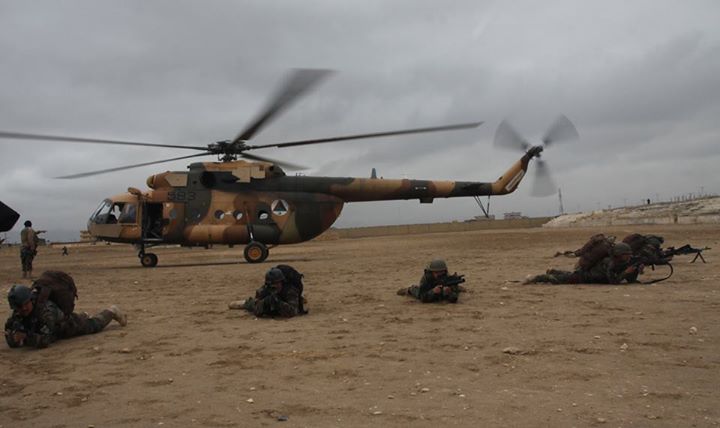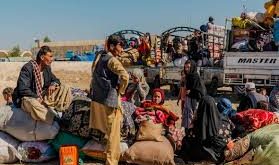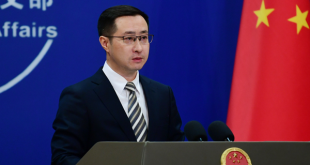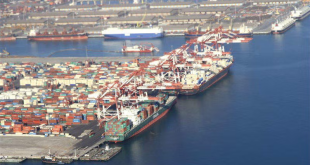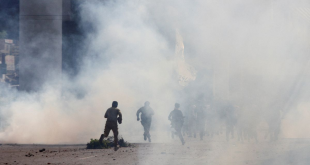KABUL: The Afghan National Defense and Security Forces (ANDSF) now have the responsibility of providing security for 100 per cent of the country’s population, which is a significant force capability improvement since 2012 when security members protected only half of the population, the NATO Resolute Support spokesman said.
In his exclusive interview with Pajhwok Afghan News, the spokesman said Afghan security forces “performed admirably through the 2014 Fighting Season – preventing the Taliban from disrupting national elections and providing the time and space for the formation of the Afghan Unity Government.”
He said that ANDSF have proven to be resilient and capable, and the country’s forces have largely been able to defend against direct insurgent attacks.
When asked about NATO’s new mission, he said the Resolute Support is participating in a train, advise, and assist role. In this capacity, “we are committed to continue pressuring insurgent networks until they are rendered incapable of conducting significant operations against Afghan government and the Afghan population.”
He went on to say that “advising and assistance is taking place at the headquarters level, advisers and Afghan counterparts meet routinely to discuss important security issues and offer their experience when appropriate. This close cooperation with ANDSF will ensure Afghanistan is never a safe haven for international terrorism again.
As Gen. John F. Campbell, Resolute Support commander has said: “We’ll continue to train, advise, and assist the ANDSF and ASI at the operational and strategic levels so that they can sustain their hard-fought gains and win the war.”
Referring to Helmand operation codenamed “Zulfaqar,” he said that the ANDSF was conducting joint operations in north Helmand to clear the area of insurgents and disrupt their preparations for fighting season 2015.
“These are complex operations that were planned and are being led by the Afghan National Army’s (ANA) 215 Corps. The operations also involve several ANDSF units to include the Afghan Air Force (AAF), Afghan special operations forces, and elements of the Afghan National Police (ANP).”
ANDSF elements in adjacent districts/provinces are conducting supporting operations as well and these operations demonstrate the resolve of Afghan government and reach of the ANDSF as they continue to project a significant presence into this contested region.
More specifically, they demonstrate the emerging capabilities of the ANDSF to plan and execute complex joint operations to include artillery with the D-30 122mm howitzer and mortar fires while coordinating with the Afghan Air Force (AAF) to incorporate Mi-17s, Mi35s and PC 12s to support mobility, aerial resupply, aerial fires and Intelligence, Surveillance and Reconnaissance (ISR), he added.
On President Ashraf Ghani and Chief Executive Officer (CEO) Abdullah Abdullah’s recent US visit, he said that by almost all metrics, progress in Afghanistan has been significant in the last 13 years; the ANDSF and Coalition provided the necessary security to enable these improvements.
According to Gen. John F. Campbell, Resolute Support commander, “2015 really is a critical year for Afghanistan to demonstrate transparency and accountability. I talk to President Ghani and Dr. Abdullah all the time on this topic. What I tell them is if they get the right leadership and hold people accountable it will solve 70% of their issues.”
He said it was also essential that they demonstrate to the international community that they were doing the right things in order to maintain support for funding – because they could not do it on their own. “I think we have a huge opportunity for a little bit of continued investment with the international community to really make Afghanistan a win here,” he remarked.
President Ghani knows he must demonstrate this to maintain support from the international community. The president has embraced his role as Commander-in-Chief and taken decisive action with political and military leaders to address issues affecting administrative structures and military operations.
Ghani has also taken significant strides to improve relations with regional neighbors and worked to provide timely responses to allegations of corruption, which demonstrates a commitment to eliminating corruption and maintaining transparency.
“Continued progress in Afghanistan is only possible through a commitment from all levels within the government of Afghanistan along with the support and encouragement from NATO Allies, partner countries and the wider international community,” he reiterated.
A core component of Coalition Forces support to Afghan Security Institutions was sustainment, he said, adding that meant ensuring today’s gains were lasting and that troops were properly equipped to meet challenges.
“We do expect to see significant improvement in the AAF’s operational capability for this fighting season as their capacity has increased from five armed Mi-35 helicopters to 29 helicopters that now include Mi-35, Mi-17 and MD-530F. Additionally, 240 Afghan Tactical Air Coordinators have completed initial training requirements and will be equipped in the spring with follow-on training to support effective air-ground integration. It is of notable interest that the AAF gains have enabled remarkable progress in ANDSF casualty evacuation (CAEVAC) since 2012,” he stated.
Since the ANDSF assumed the lead for security operations during the 2013 fighting season, they experienced an increased operational tempo by a factor of four in a single year, he said, adding that there was a corresponding increase in ANDSF casualties.
However, he said despite the increased casualties in 2014 from leading security operations, no ANDSF unit has been defeated or declared non-effective. Casualties and attrition rates are challenges, and President Ghani along with ANDSF leaders are actively taking measures to address them, he noted.
When asked what steps were being taken to decrease casualties’ ratio among ANSF, he said that Afghans have worked hard to reduce casualties. “They’ve done this through medical training and increasing their medical evacuation capability.” (PAN)
 Afghanistan Times Latest News and Analysis from Afghanistan and the Region
Afghanistan Times Latest News and Analysis from Afghanistan and the Region
